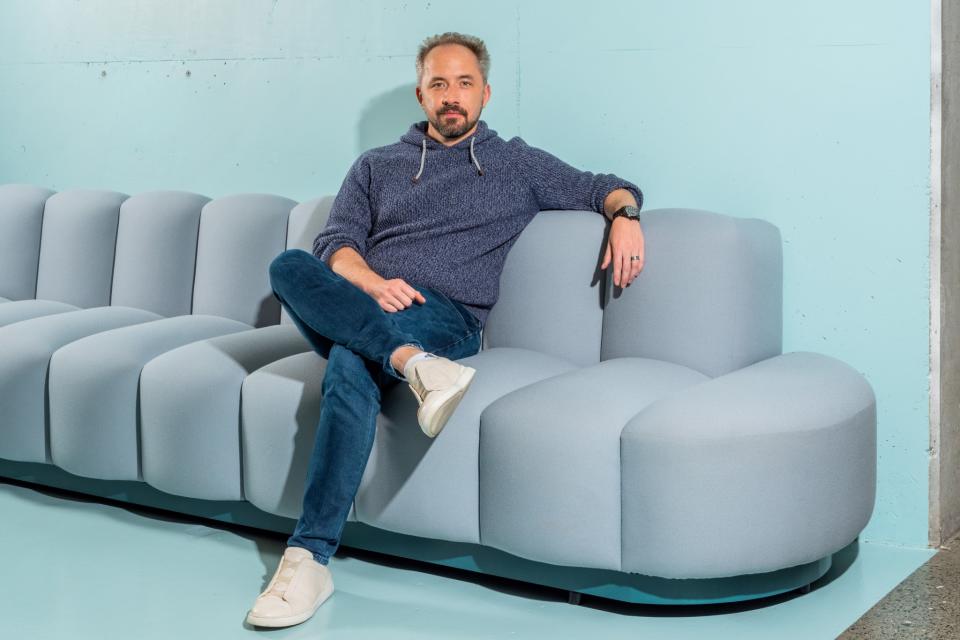Dropbox’s CEO has a message for bosses who want workers to return to office: ‘They’re not resources to control’

What would Drew Houston, CEO of Silicon Valley software giant Dropbox, say to fellow CEOs—like Google’s Sundar Pichai or Meta’s Mark Zuckerberg—who seem to believe that three days a week in-person is crucial for company culture?
“I’d say, ‘your employees have options,’” Houston told Fortune this past week. “They're not resources to control.”
While Dropbox used to work near-entirely at its Bay Area headquarters, Houston has completely warmed to a distributed model since the pandemic—and is mystified as to why other leaders haven’t joined him. (Houston founded Dropbox in 2007, the year after he graduated from MIT, and has been its CEO ever since.)
“From a product design perspective, customers are our employees. We’ve stitched together this working model based on primary research,” he told Fortune at Dropbox’s WIP Conference—its first in-person event since 2019—in New York on Tuesday. “We've just been handed the keys that unlock this whole future of work, which is actually here.”
In April 2021, right when most of the country became eligible for vaccines and people began reconvening again across the globe, Dropbox encouraged the opposite. It officially announced its intent to go Virtual First, which meant employees were free to work remotely 90% of the time, only commuting in for the occasional meeting or happy hour.
It was a big commitment, seeing as Dropbox had just shelled out for what Houston said is one of the most expensive commercial office spaces in the Bay. But it pivoted quickly, vastly downsizing its real estate footprint from 735,000 square feet to 600,000 and rerouting those fancy office perks right back to workers—Dropbox employees are given a quarterly allowance to use on "what really matters to them," a Dropbox spokesperson told Fortune.
Granted, not everyone got to appreciate the perks. In April, Dropbox laid off 500 employees—16% of its staff—due to “slowing growth” and “the A.I. era” requiring a reallocation of resources.
As tech company after tech company has reneged on its commitments to work-from-anywhere, Dropbox hasn’t budged. “The unlock for us was realizing we’re not going back to the office as we know it, but we also don’t want to be stuck at home on Zoom for the rest of our lives,” he said. On the other hand, “What’s the ideal environment? A windowless conference room?”
The 90/10 rule
Today, Dropbox doesn’t mandate any amount of in-office presence, though they’ve maintained the 90% remote “pencil sketch” they outlined in 2021, Houston said. “Where we ended up was, there’s no substitute for the in-person connection, but let's do it in a great way, [and] let’s let people do most stuff remotely.”
Houston and his team have found, in practice, a handful of two- or three-day offsites per quarter—10% of the year—works best for their people. Crucially, it provides that oft-referenced cultural connect and brainstorming time that pro-office zealots insist upon, without exhausting workers out with a commute grind or needless hours in drab conference rooms. The key, Houston said, is that when they’re in-person, employees know they’re personally deciding to opt in, rather than being yanked.
The company also encourages flexible work hours. All meetings must narrow in on the “three D’s” of discussion, debate, or decision-making, and they can only be held between noon and 4 p.m. EST. “Any future of work strategy we chose, we wanted to ensure that employees had control over not only how they work, but where they work,” Dropbox’s chief people officer, Melanie Rosenwasser told Fortune last year. “We’re trying to put practices into place that, if adopted on a wider scale, make everyone more productive and efficient.”
As any flexibility expert can tell you, flexible work does more than just satisfy workers. It also sends recruitment stats through the roof. Remote hiring has been “a huge superpower and unlock for us,” Houston remarked. “We've gotten so many executive vice presidents that don’t live in the Bay Area who are meeting their coworkers for the first time. Now we have LA, Chicago, Boston—between dozens and hundreds of people are in these areas where we never had anyone.”
Houston also waves away the suggestion that managing a worker in Boston is any different for him than managing someone under his thumb in San Francisco. “You need a different social contract, and to let go of control,” he acknowledged. “But if you trust people and treat them like adults, they’ll behave like adults. Trust over surveillance.”
While many of Houston’s contemporaries are grumbling over employees’ intransigence—or worse, tracking their badge swipes—the Dropbox chief has been heartened by the challenge of evolving his company. “Turning Dropbox into this lab for the future of distributed work has been awesome,” he said. “It’s a working model we've been able to build a few years in the future, and stub our toes on problems and then design this whole portfolio.”
This story was originally featured on Fortune.com
